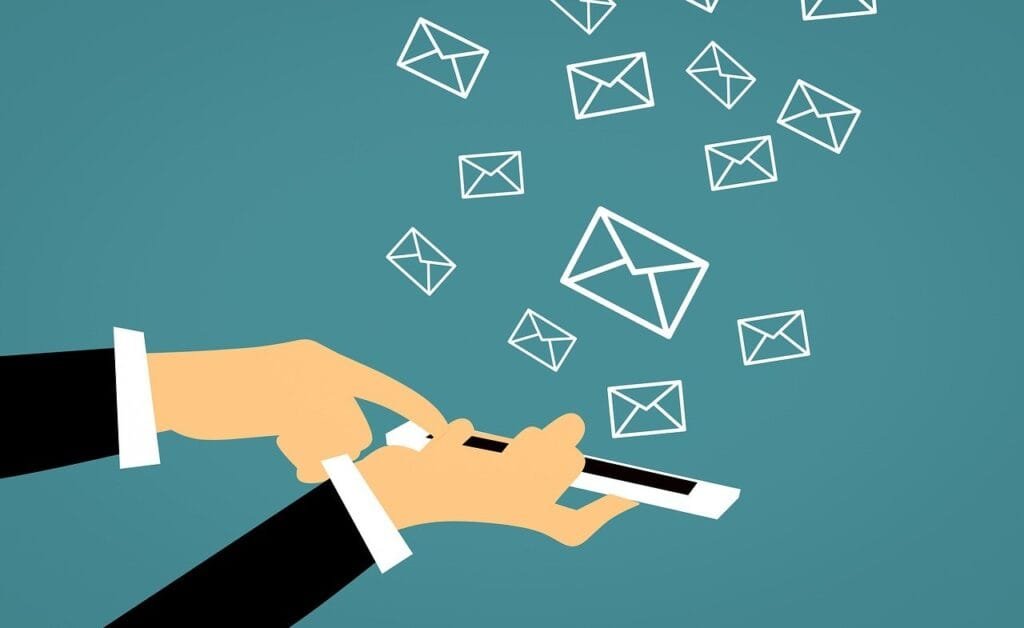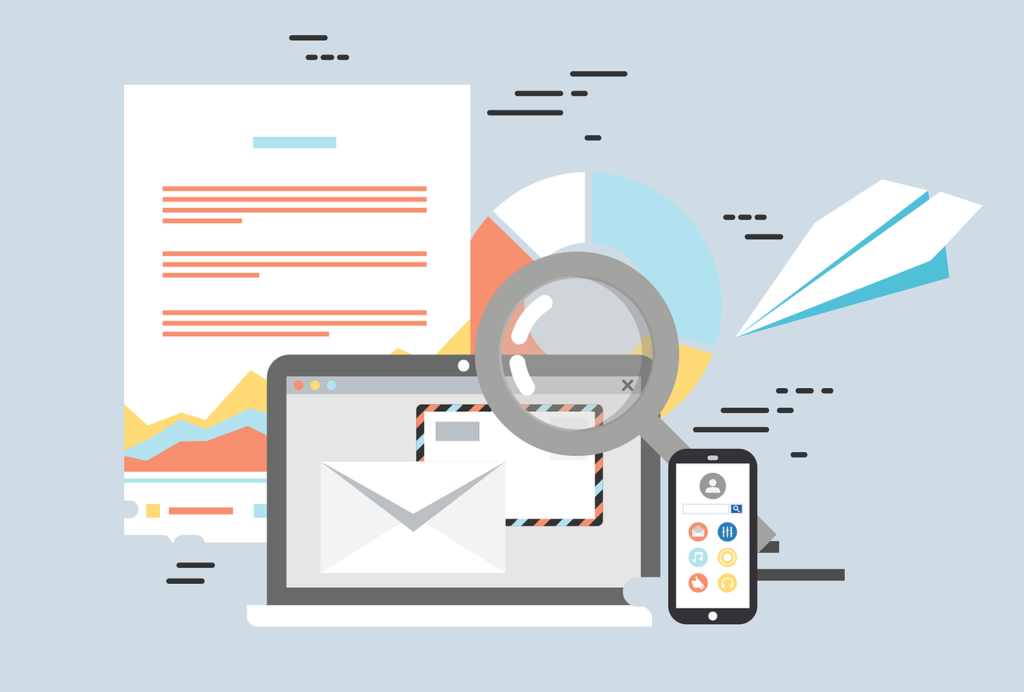This Article has been revised, edited and added to, by Poulomi Chakraborty.
- What is Email Deliverability?
- Factors Affecting Email Deliverability
- Strategies to Improve Email Deliverability
- Advanced Techniques for Ensuring Deliverability
- Monitoring and Adjusting for Long-Term Success
- Understanding and Mitigating Email Bounces
- Avoiding Common Pitfalls in Email Deliverability
- Leveraging Data for Enhanced Deliverability
- Building Trust with Your Audience
- The Role of Testing and Feedback in Continuous Improvement
- Conclusion
Email marketing is a powerful tool for businesses of all sizes, offering a direct line of communication with customers and prospects. However, the effectiveness of email marketing hinges on one critical factor: deliverability. If your emails don’t reach the inbox, all your efforts in crafting compelling content and offers go to waste. In this article, we’ll explore the importance of deliverability in email marketing and provide actionable strategies to ensure your messages consistently reach your audience.
What is Email Deliverability?

Email deliverability refers to the ability of an email to successfully land in the recipient’s inbox rather than being diverted to the spam folder or bouncing back entirely. It’s a complex process influenced by various factors including the sender’s reputation, email content, and recipient engagement. Understanding and optimizing these factors is essential for any email marketing campaign to succeed.
Email Deliverability vs. Email Delivery
It’s crucial to distinguish between email deliverability and email delivery. Email delivery simply means that your email was accepted by the recipient’s server. However, just because an email is delivered doesn’t guarantee it will appear in the inbox.
Deliverability focuses on ensuring that delivered emails are actually seen by your audience in their primary inbox rather than being filtered out.
This distinction is vital. You might have a high delivery rate but a low open rate if your emails are consistently ending up in spam folders. Therefore, focusing on deliverability helps in not only getting your emails accepted by servers but also ensuring they are positioned to be read.
The Cost of Poor Deliverability
Poor deliverability can have significant consequences for your email marketing efforts. If your emails are frequently marked as spam, your sender reputation can suffer.
This leads to even more emails being filtered out in the future, creating a vicious cycle. Ultimately, this can reduce your campaign’s effectiveness, lower customer engagement, and impact your revenue.
Additionally, there are financial costs associated with poor deliverability. You’re paying for email marketing services, investing time and resources in crafting emails, and potentially losing sales due to lower engagement. Ensuring good deliverability maximizes the return on your investment in email marketing.
Importance of Sender Reputation
Sender reputation is a critical factor in email deliverability. It’s essentially a score that Internet Service Providers (ISPs) assign to your domain and IP address based on various factors like bounce rates, spam complaints, and engagement levels. A good sender reputation means ISPs are more likely to deliver your emails to the inbox.
Maintaining a good sender reputation requires ongoing effort. This includes following best practices for email marketing, such as obtaining explicit consent from recipients, sending relevant content, and promptly addressing any issues that might arise.
A poor reputation can lead to your emails being blocked entirely, so it’s crucial to monitor and manage this aspect carefully.
Comparison: High Deliverability vs. Low Deliverability
Consider two hypothetical companies: Company A and Company B. Both are in the same industry and send a similar volume of emails. Company A has optimized its email deliverability, while Company B has not.
Company A enjoys high deliverability rates, meaning its emails consistently reach the recipients’ inboxes. As a result, they have high open and click-through rates, leading to better engagement and higher conversion rates. Their marketing campaigns are successful, driving significant revenue and customer loyalty.
Company B, on the other hand, struggles with low deliverability. A large percentage of their emails end up in spam folders, resulting in low open rates. Consequently, their engagement levels are poor, and their marketing efforts yield little return. Over time, this not only affects their revenue but also damages their sender reputation, making it even harder to improve deliverability.
This comparison highlights the profound impact deliverability can have on the success of email marketing campaigns. By focusing on deliverability, you can ensure that your marketing efforts are not in vain and that your messages reach and resonate with your audience.
Factors Affecting Email Deliverability

Email Content Quality
The content of your emails plays a significant role in deliverability. ISPs and spam filters analyze email content to determine if it is spam. Avoid using spammy language, excessive punctuation, and all-caps. Instead, focus on creating valuable, engaging, and relevant content for your audience.
Crafting high-quality content involves understanding your audience’s needs and preferences. Personalize your emails to make them more engaging. Use your recipient’s name, segment your email list based on interests, and tailor your messages accordingly. This personalization increases the likelihood that your emails will be well-received and not marked as spam.
Email Authentication
Email authentication is a crucial step in improving deliverability. Authentication protocols like SPF (Sender Policy Framework), DKIM (DomainKeys Identified Mail), and DMARC (Domain-based Message Authentication, Reporting, and Conformance) help ISPs verify that your emails are genuinely from your domain. These protocols prevent spoofing and phishing attempts, which can damage your sender reputation.
Setting up these authentication methods may require some technical know-how, but many email service providers offer guides and support to help you through the process. Once configured, these protocols provide an additional layer of trustworthiness to your emails, significantly enhancing deliverability.
Engagement Metrics
ISPs monitor how recipients interact with your emails. High engagement levels, such as opens, clicks, replies, and forwards, signal that your emails are valuable and wanted. Conversely, low engagement, high bounce rates, and spam complaints can negatively impact your sender reputation.
To improve engagement, focus on creating compelling subject lines and content that encourages interaction. Monitor your engagement metrics regularly to identify trends and areas for improvement.
Use A/B testing to experiment with different elements of your emails, such as subject lines, content, and send times, to see what resonates best with your audience.
List Hygiene
Maintaining a clean email list is vital for deliverability. Regularly remove inactive subscribers, correct typos, and manage bounce rates. Sending emails to invalid addresses can lead to high bounce rates, which ISPs view negatively. Use email verification tools to ensure the validity of your email addresses before sending out campaigns.
List segmentation is another aspect of list hygiene. By segmenting your list based on subscriber behavior and preferences, you can send more targeted and relevant emails. This not only improves engagement but also reduces the likelihood of your emails being marked as spam.
Sender Reputation Management
As mentioned earlier, sender reputation is crucial for deliverability. Monitor your reputation using tools provided by email service providers or third-party services.
Address any issues promptly to maintain a positive reputation. This might involve reducing the frequency of your emails, improving content quality, or removing problematic addresses from your list.
Building and maintaining a good sender reputation requires ongoing effort. Stay informed about best practices in email marketing and continuously adapt your strategies to meet changing industry standards and audience expectations.
Avoiding Spam Traps
Spam traps are email addresses set up by ISPs or anti-spam organizations to catch spammers. These addresses are not used for communication, so any email sent to them indicates that the sender is using questionable list acquisition practices. Hitting a spam trap can severely damage your sender reputation and deliverability.
To avoid spam traps, never purchase email lists. Instead, focus on organic list-building strategies, such as offering valuable content in exchange for email subscriptions. Use double opt-in methods to ensure that your subscribers genuinely want to receive your emails.
Compliance with Regulations
Compliance with email marketing regulations like GDPR, CAN-SPAM, and CASL is not only a legal requirement but also a best practice for deliverability. Ensure that you have explicit consent from your subscribers and provide clear opt-out options in every email.
Transparency about how you collect and use email addresses builds trust with your audience and helps maintain good deliverability.
Understanding and adhering to these regulations can be complex, but many resources and tools are available to help you stay compliant. Regularly review your practices and policies to ensure they meet current regulatory requirements.
Importance of Testing
Regular testing is essential to ensure your emails are optimized for deliverability. Test your emails across different email clients and devices to check for rendering issues. Use spam testing tools to identify any elements that might trigger spam filters.
Testing also involves monitoring your emails’ performance metrics. Track open rates, click-through rates, bounce rates, and spam complaints to gauge the effectiveness of your campaigns. Use this data to make informed adjustments and continuously improve your email marketing strategy.
Strategies to Improve Email Deliverability

Building a High-Quality Email List
A high-quality email list starts with proper acquisition techniques. Focus on attracting subscribers who are genuinely interested in your content. Use lead magnets such as ebooks, webinars, or exclusive content to entice visitors to sign up. Ensure that your sign-up forms are easy to complete and clearly state what subscribers can expect.
Implementing a double opt-in process can further ensure that your list is composed of engaged recipients. With double opt-in, subscribers confirm their interest by clicking a link in a confirmation email, reducing the chances of fake or mistyped email addresses entering your list.
Segmenting Your Audience
Segmentation is a powerful strategy for improving deliverability and engagement. By dividing your email list into smaller, more targeted segments based on demographics, behavior, or past interactions, you can send more relevant and personalized emails. This relevance increases the likelihood that recipients will open, read, and interact with your emails.
For example, if you’re running a promotion, you can segment your list by purchase history, targeting previous customers with specific offers that match their interests.
Similarly, for newsletters, segmenting by topics of interest can help deliver more tailored content, increasing engagement rates and reducing the chances of your emails being marked as spam.
Crafting Engaging Subject Lines
The subject line is the first thing your recipients see, and it plays a crucial role in whether they open your email. Crafting engaging subject lines that pique curiosity, create a sense of urgency, or offer value can significantly improve open rates. However, avoid using spammy words and excessive punctuation that might trigger spam filters.
A/B testing different subject lines can help you determine what resonates best with your audience. Try variations that include personalization, such as the recipient’s name or specific interests, and measure the results to refine your approach.
Designing Mobile-Friendly Emails
With a significant portion of emails being opened on mobile devices, ensuring your emails are mobile-friendly is essential for deliverability and engagement. Use responsive design to ensure your emails look great on any device. Keep your email layout simple and easy to navigate, with clear calls to action that are easy to tap.
Testing your emails on various devices and email clients can help you identify and fix any rendering issues before sending out your campaigns. Mobile-friendly emails not only enhance user experience but also improve engagement metrics, which in turn supports better deliverability.
Optimizing Email Content
Content quality directly impacts deliverability. Avoid large, unoptimized images and excessive use of links, as these can trigger spam filters. Use a balanced mix of text and visuals, and ensure your content is valuable and relevant to your audience.
Personalize your email content to make it more engaging. Use data from your segmentation efforts to tailor the message to each recipient’s interests and preferences. Engaging content encourages recipients to interact with your emails, boosting your engagement metrics and improving deliverability.
Utilizing Feedback Loops
Feedback loops allow you to receive notifications when recipients mark your emails as spam. By subscribing to feedback loops provided by major ISPs, you can quickly identify and address issues that might be causing your emails to be flagged. This proactive approach helps you maintain a clean email list and a good sender reputation.
When you receive a spam complaint, remove the complaining address from your list immediately. Analyze the feedback to understand the root cause of the complaint and make necessary adjustments to your email strategy.
Monitoring and Analyzing Metrics
Regularly monitoring key metrics such as open rates, click-through rates, bounce rates, and spam complaints is crucial for maintaining good deliverability. These metrics provide insights into how your emails are performing and where improvements are needed.
Use the data to identify trends and patterns. For instance, a sudden increase in bounce rates might indicate issues with your email list quality, while low open rates could suggest problems with your subject lines or sending times. By continually analyzing these metrics, you can make informed adjustments to your email campaigns and improve deliverability over time.
Implementing a Re-Engagement Campaign
Over time, some subscribers may become inactive and stop engaging with your emails. Implementing a re-engagement campaign can help you reconnect with these inactive subscribers and determine if they are still interested in your content. Send a series of targeted emails to inactive subscribers, asking if they wish to remain on your list and offering incentives to re-engage.
If subscribers remain unresponsive, it’s best to remove them from your list to maintain good deliverability rates. Keeping your list clean and focused on engaged recipients helps ensure that your emails are well-received and not flagged as spam.
Working with a Reputable Email Service Provider
Choosing the right email service provider (ESP) can have a significant impact on your deliverability. A reputable ESP will offer robust deliverability tools and support, including email authentication, list management features, and detailed analytics. They can also help you navigate compliance with email marketing regulations and best practices.
Evaluate different ESPs based on their deliverability rates, customer support, and the specific features they offer. Partnering with a reliable ESP provides the infrastructure and expertise needed to optimize your email campaigns for deliverability.

Advanced Techniques for Ensuring Deliverability
Implementing DMARC for Enhanced Security
DMARC (Domain-based Message Authentication, Reporting, and Conformance) builds on existing email authentication techniques (SPF and DKIM) to provide an additional layer of security. By implementing DMARC, you can protect your domain from being used in phishing and spoofing attacks, which can harm your sender reputation and deliverability.
DMARC enables you to specify how your emails should be handled if they fail authentication checks. It also provides detailed reports on email authentication activity, helping you monitor and improve your email security. Implementing DMARC involves configuring DNS records, which might require technical assistance, but the enhanced security and improved deliverability are well worth the effort.
Leveraging AI and Machine Learning
Artificial intelligence (AI) and machine learning can significantly enhance your email deliverability strategy. AI-powered tools can analyze vast amounts of data to predict the best times to send emails, craft optimized subject lines, and personalize content at scale.
Machine learning algorithms can also help identify patterns in your email engagement data, providing insights into what types of content resonate most with your audience. These insights enable you to continually refine your email marketing strategy, ensuring your messages are always relevant and engaging.
Utilizing BIMI for Brand Recognition
Brand Indicators for Message Identification (BIMI) is a relatively new email specification that allows you to display your brand logo alongside your emails in recipients’ inboxes. BIMI builds on existing email authentication protocols to enhance brand recognition and trust.
To implement BIMI, you need to have strong email authentication in place (SPF, DKIM, and DMARC) and register your logo with a certified authority. While setting up BIMI can be complex, it can boost your brand’s visibility and credibility, improving engagement and deliverability.
Ensuring Accessibility in Email Design
Designing emails that are accessible to all users, including those with disabilities, is not only the right thing to do but also improves deliverability and engagement. Use alt text for images, ensure sufficient color contrast, and structure your emails with clear headings and logical reading order.
Accessible emails are more likely to be read and engaged with, enhancing your sender reputation. Additionally, many ISPs prioritize emails that follow accessibility best practices, further boosting your deliverability.
Continuous Improvement through Testing
Continuous testing is vital for maintaining and improving email deliverability. Regularly test different aspects of your emails, including subject lines, content, design, and send times, to identify what works best for your audience.
A/B testing allows you to compare the performance of different versions of your emails. Use the insights gained from these tests to refine your email marketing strategy. Testing ensures that your emails remain effective and engaging, helping you maintain a strong sender reputation and high deliverability rates.
Engaging with Email Experts
Sometimes, improving email deliverability requires expert assistance. Working with email deliverability consultants or leveraging the expertise of your email service provider can provide valuable insights and strategies tailored to your specific needs.
These experts can help you diagnose and resolve complex deliverability issues, implement advanced authentication protocols, and optimize your email marketing strategy. Engaging with professionals ensures that you have access to the latest best practices and technologies for maintaining high deliverability.
Monitoring and Adjusting for Long-Term Success

Regular Deliverability Audits
Conducting regular deliverability audits helps you stay ahead of potential issues and maintain a healthy email marketing strategy. These audits should review your email authentication, sender reputation, engagement metrics, and compliance with email regulations.
Identify any areas that need improvement and take corrective action promptly. Regular audits ensure that your email marketing practices evolve with industry standards and best practices, maintaining optimal deliverability.
Staying Informed About Industry Changes
The email marketing landscape is constantly evolving, with new technologies, regulations, and best practices emerging regularly. Staying informed about these changes is crucial for maintaining good deliverability.
Subscribe to industry newsletters, participate in webinars, and join professional networks to keep up with the latest developments. Implementing new strategies and technologies as they become available helps you stay competitive and ensures your emails continue to reach the inbox.
Building Relationships with ISPs
Building positive relationships with major ISPs can enhance your email deliverability. This involves maintaining good sending practices, promptly addressing any issues that arise, and being responsive to feedback.
Some ISPs offer tools and resources for email marketers, including feedback loops and deliverability support. Leveraging these resources can help you maintain a strong sender reputation and high deliverability rates.
Engaging Your Audience Consistently
Consistent engagement with your audience is key to maintaining good deliverability. Regularly send valuable, relevant content that your subscribers look forward to receiving. Encourage interaction by asking for feedback, running surveys, and responding to replies.
Building a loyal, engaged subscriber base enhances your sender reputation and ensures that your emails are welcomed in the inbox. Consistent engagement fosters trust and long-term relationships with your audience.
Utilizing Advanced Analytics
Advanced analytics provide deeper insights into your email marketing performance. Use tools that offer detailed reports on engagement metrics, deliverability rates, and recipient behavior. Analyze this data to identify trends and opportunities for improvement.
Advanced analytics can help you understand how different segments of your audience interact with your emails, enabling more precise targeting and personalization. This level of insight ensures that your emails remain relevant and engaging, supporting high deliverability.
Understanding and Mitigating Email Bounces
Types of Email Bounces
Email bounces occur when emails cannot be delivered to the recipient’s inbox. There are two main types of bounces: hard bounces and soft bounces. Hard bounces are permanent delivery failures, usually due to invalid email addresses or non-existent domains. Soft bounces are temporary issues, such as a full inbox or a problem with the recipient’s server.
Managing Hard Bounces
Hard bounces should be addressed immediately to maintain a clean email list and protect your sender reputation. Regularly monitor bounce reports provided by your email service provider and remove hard-bounced email addresses from your list. Persistently sending emails to invalid addresses can lead to being blacklisted by ISPs.
Handling Soft Bounces
Soft bounces require a different approach since they are temporary. Retry sending to these addresses a few times before considering removal. Monitor the frequency and reasons for soft bounces to identify any patterns that might indicate underlying issues, such as problems with your email content or sending infrastructure.
Proactive Bounce Management
Implement proactive measures to minimize bounces. Use email verification tools to validate addresses at the point of capture and periodically clean your list. Encourage recipients to update their email addresses and provide an easy way for them to do so. By maintaining a high-quality list, you can reduce bounce rates and improve deliverability.
Avoiding Common Pitfalls in Email Deliverability

Overcoming Spam Filters
Spam filters are designed to protect recipients from unwanted emails, but they can sometimes mistakenly flag legitimate messages. To avoid spam filters, ensure your email content is relevant, valuable, and free from spammy elements. Avoid using excessive promotional language, too many exclamation marks, and all-caps text.
Balancing Image and Text Ratios
Emails with a high image-to-text ratio can trigger spam filters. While images can enhance the visual appeal of your emails, they should be balanced with sufficient text content. Ensure your emails are readable even if the images do not load by using descriptive alt text and a clear message structure.
Maintaining Consistent Sending Patterns
Consistency in your sending patterns helps ISPs recognize your emails as legitimate. Avoid sudden spikes in email volume, which can raise red flags. Develop a regular sending schedule and stick to it, gradually increasing volume as your list grows and engagement improves.
Avoiding Blacklists
Being blacklisted can severely impact your email deliverability. Monitor your sending reputation using tools like Sender Score and regularly check if your IP addresses are on any blacklists. If you find yourself on a blacklist, identify the cause and take corrective action immediately. Removing your IP from a blacklist can involve working directly with the blacklist operator and demonstrating that you have resolved the issues.
Leveraging Data for Enhanced Deliverability
Analyzing Subscriber Engagement
Subscriber engagement is a key indicator of email deliverability. Track metrics such as open rates, click-through rates, and conversion rates to gauge how your audience is interacting with your emails. High engagement signals to ISPs that your emails are valuable and relevant, supporting better deliverability.
Utilizing Heatmaps and Click Tracking
Heatmaps and click tracking tools provide visual insights into how recipients interact with your emails. These tools show where recipients click, how far they scroll, and what elements capture their attention. Use this data to optimize your email design and content, making it more engaging and effective.
Segmenting Based on Engagement
Segment your email list based on engagement levels to tailor your email strategy. Highly engaged subscribers might receive more frequent updates, while less engaged subscribers could benefit from re-engagement campaigns. This targeted approach ensures that your emails remain relevant and valuable to each segment, improving overall deliverability.
Predictive Analytics for Timing and Content
Predictive analytics can help you determine the best times to send emails and the types of content that resonate most with your audience. By analyzing past behavior and engagement patterns, predictive tools can suggest optimal sending times and content themes. Implementing these insights can enhance engagement and deliverability.
Building Trust with Your Audience

Providing Clear Opt-In and Opt-Out Options
Transparency in your email practices builds trust with your audience. Use clear opt-in methods to ensure that subscribers knowingly and willingly join your list. Provide easy and visible opt-out options in every email, allowing recipients to unsubscribe if they no longer wish to receive your messages.
Ensuring Privacy and Security
Protecting your subscribers’ privacy and data security is crucial for maintaining trust and compliance with regulations. Implement strong security measures to safeguard your email list and personal data. Communicate your privacy policies clearly and reassure subscribers that their information is secure.
Engaging with Authenticity and Relevance
Authenticity and relevance are key to building a loyal subscriber base. Ensure that your email content is genuinely helpful, interesting, and aligned with your brand values. Engage with your audience by sharing stories, insights, and offers that resonate with their interests and needs.
Encouraging Two-Way Communication
Encouraging two-way communication can strengthen relationships with your subscribers. Invite feedback, respond to questions, and show appreciation for their engagement. Creating an interactive and responsive email environment makes your audience feel valued and more likely to engage positively with your emails.
The Role of Testing and Feedback in Continuous Improvement
Conducting Regular A/B Testing
A/B testing is essential for optimizing various elements of your emails, from subject lines to content and design. Regularly test different versions of your emails to see what performs best. Analyze the results and implement the winning strategies to continually enhance your email marketing efforts.
Gathering and Analyzing Feedback
Actively seek feedback from your subscribers to understand their preferences and pain points. Use surveys, polls, and direct responses to gather insights. Analyzing this feedback helps you refine your email content, design, and strategy, ensuring it meets your audience’s needs and expectations.
Iterating Based on Data and Insights
Continuous improvement is key to maintaining high deliverability. Use the data and insights gathered from testing and feedback to iterate on your email campaigns. Stay agile and open to change, adapting your strategies to evolving audience preferences and industry trends.
Conclusion
Ensuring your emails reach the inbox is critical for the success of your email marketing campaigns. By focusing on key factors like sender reputation, email content quality, authentication, and engagement metrics, you can significantly enhance your deliverability. Building a high-quality email list, leveraging advanced techniques, and continuously monitoring and adjusting your strategy are essential steps in maintaining optimal deliverability.
Engaging authentically with your audience and prioritizing their preferences helps foster trust and long-term loyalty. As the email marketing landscape evolves, staying informed and agile will allow you to adapt and thrive, ensuring your messages consistently reach and resonate with your audience.
Read Next
- How to use SEMrush: An Explainer
- How to use Zoho CRM: An Explainer
- How to use Tailwind for Social Media: An Explainer
- How to use SocialBee for Social Media: An Explainer
- How to use SproutSocial for Social Media: A Practical Guide






















Comments are closed.